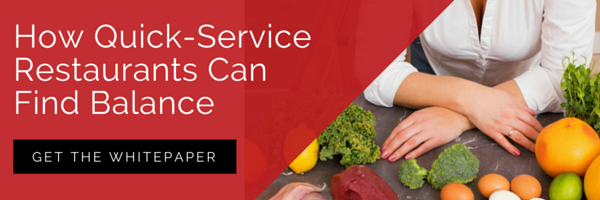
When the media first began covering sustainability with regularity, the fast food industry was one of many that was slow to react. Perhaps corporate executives thought that consumer interest in the idea was a passing fad, and that it would soon be forgotten. Sustainability has, of course, worked its way both into the mainstream consciousness and into the mission statements of many corporations as it becomes increasingly obvious that it is a concept that is not going anywhere. Indeed, it looks to become even more important in the decision making process of consumers as time goes on.
With all of this in mind, it would be wise for the fast food industry to try to keep up with the trend and provide the sustainability that consumers seek. To do this, fast food supply chain managers need to check their fast food supply chain sources to make sure they provide the sustainable solutions they need.
There is considerable consumer interest in sustainability, but it’s difficult to pin down a single definition.
Sustainability means different things to different fast food customers. To one, it might mean all natural ingredients. To another it might mean those same ingredients are grown on local farms to reduce the impact of transportation and support the local economy. To still another customer, sustainability might mean packaging that is recyclable or scaled down to create less landfill waste. All of these customers are technically correct, and most will be more likely to patronize those restaurants that provide their type of sustainability.
According to a survey by Cone Communications, 71 percent of Americans keep environmental impact in mind when they shop. Whether the customer is truly concerned about the environment or just trying to buy sustainable goods because that’s what their friends are doing or that’s what people in the media say they should do, the end result is the same: Sustainable products get greater consideration. Even more importantly, if a business is perceived to have a commitment to sustainability overall, it can result in greater brand loyalty and recommendations to other potential customers.
Sharing information about your sustainability efforts can be a hit with consumers.
It’s not enough to simply provide sustainability in product and packaging — the consumer also has to know about the effort for it to be effective. This presents a unique opportunity to turn the movement towards nutrition label transparency into a sales advantage. A nutrition label and ingredients list can call attention to natural ingredients and sustainable farming practices used. Beyond the labels on the packaging, it’s important to call attention to the sustainable packaging itself. A survey by Asia Pulp & Paper indicates that 62 percent of Americans want not only sustainable food packaging, but also clear, understandable labeling to describe this packaging.
Sustainability requires a unique supply chain.
With all of the sustainability and transparency the consumer wants, the challenge posed for the fast food restaurant is to provide sustainability at every level, and this means cleaning up the practices within the supply chain. If a current supplier has no interesting in offering sustainable solutions, it’s time to start shopping around for a new one. Obviously, in some cases this will mean paying a higher price — one reason why a commitment to sustainability often comes down to a corporate policy rather than a simple decision by a supply chain manager.
What you can do as a supply chain manager is to compare costs, find the best prices on sustainable and non-sustainable goods and services, and present them to your brand’s C-Suite. Let them decide if the sustainable options provide enough “bang for the buck.” Given the correct information, most savvy corporate leaders and marketing experts will see the long term value in keeping up with consumer demand for sustainability, even if there is additional supply cost.
Sustainability is much more than a flash in the pan consumer trend or a cute media buzzword that is soon to be replaced by the latest industry jargon. As the debate continues about global warming and natural resources become more scarce, the already strong consumer focus on sustainability is likely to intensify. Fast food restaurants looking to stay in tune with consumer needs and desires will need to ride along with this trend as far as it will go. Fast food supply chain managers can help their organizations by identifying suppliers with sustainable products and practices in every area, from growing to transport to packaging.






